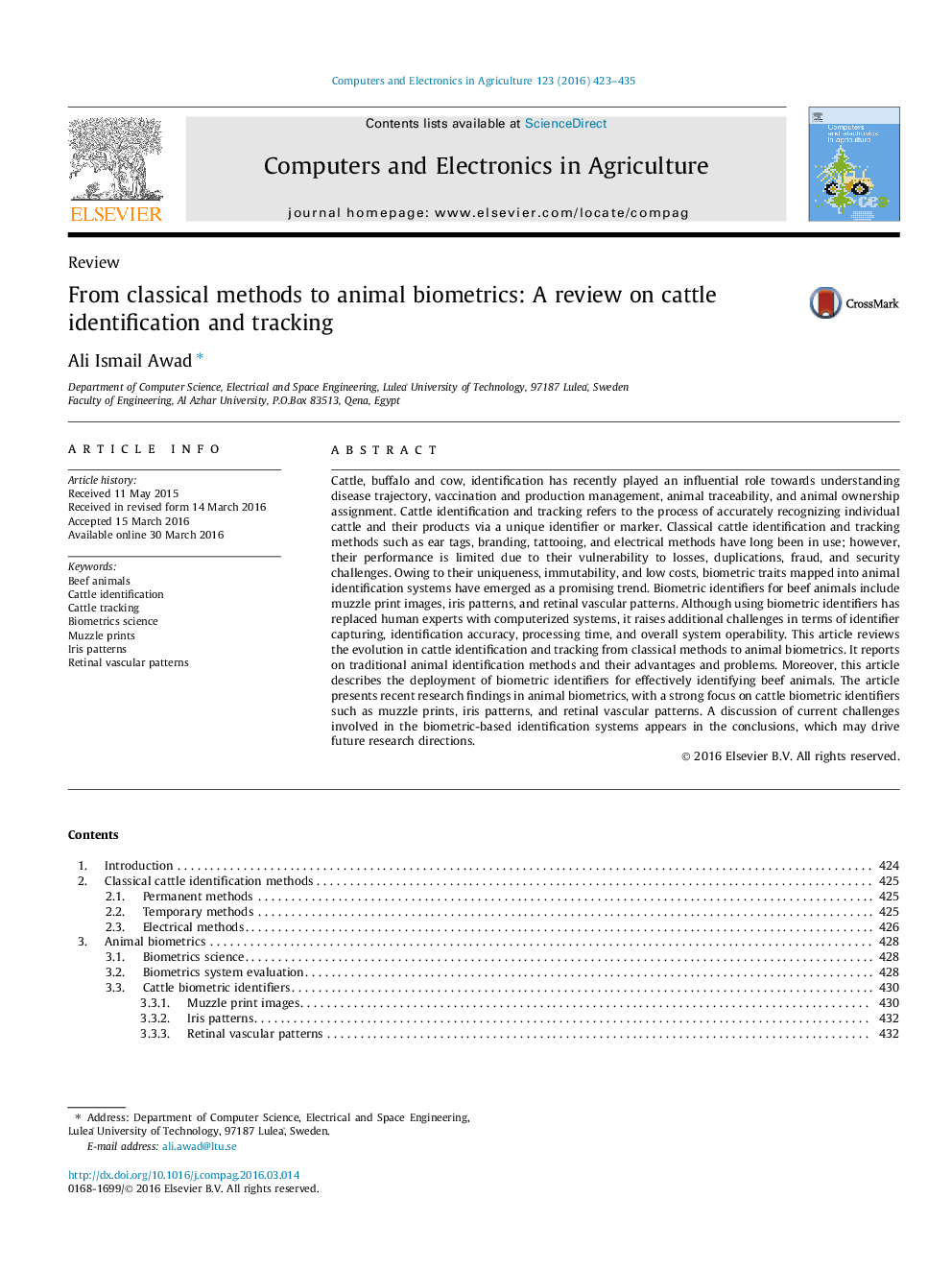| Article ID | Journal | Published Year | Pages | File Type |
|---|---|---|---|---|
| 83977 | Computers and Electronics in Agriculture | 2016 | 13 Pages |
•A review on the evolution of cattle identification and tracking methods is presented.•Classical methods do not cope with the current cattle identification requirements.•RFID has gained popularity in cattle identification, but with security issues.•Animal biometrics is a promising technology, but with accuracy issues.•Studies on integrating animal biometrics into RFID are encouraged.
Cattle, buffalo and cow, identification has recently played an influential role towards understanding disease trajectory, vaccination and production management, animal traceability, and animal ownership assignment. Cattle identification and tracking refers to the process of accurately recognizing individual cattle and their products via a unique identifier or marker. Classical cattle identification and tracking methods such as ear tags, branding, tattooing, and electrical methods have long been in use; however, their performance is limited due to their vulnerability to losses, duplications, fraud, and security challenges. Owing to their uniqueness, immutability, and low costs, biometric traits mapped into animal identification systems have emerged as a promising trend. Biometric identifiers for beef animals include muzzle print images, iris patterns, and retinal vascular patterns. Although using biometric identifiers has replaced human experts with computerized systems, it raises additional challenges in terms of identifier capturing, identification accuracy, processing time, and overall system operability. This article reviews the evolution in cattle identification and tracking from classical methods to animal biometrics. It reports on traditional animal identification methods and their advantages and problems. Moreover, this article describes the deployment of biometric identifiers for effectively identifying beef animals. The article presents recent research findings in animal biometrics, with a strong focus on cattle biometric identifiers such as muzzle prints, iris patterns, and retinal vascular patterns. A discussion of current challenges involved in the biometric-based identification systems appears in the conclusions, which may drive future research directions.
